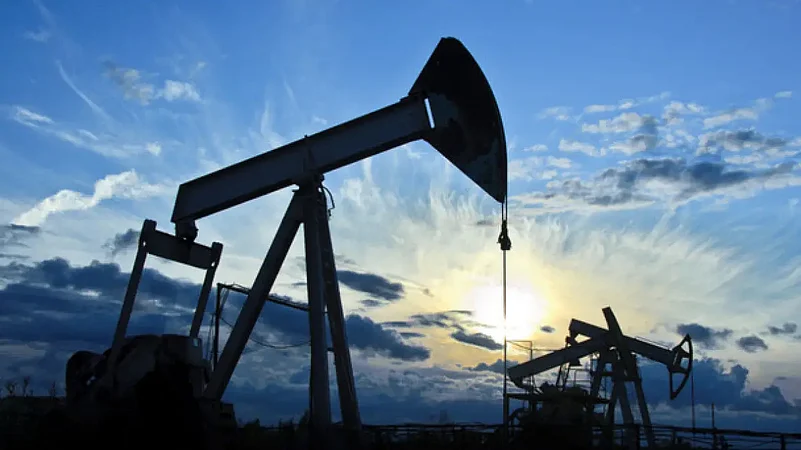India has achieved the target of supplying 10 per cent ethanol-blended petrol five months ahead of schedule and is aiming to double the blend by 2025-26 in order to cut oil import dependence and address environmental issues.
The original target for doping 10 per cent ethanol, extracted from sugarcane and other Agri commodities, in petrol originally was November 2022 but this has been achieved in June thanks to a tremendous effort by state-owned fuel retailers Indian Oil Corporation (IOC), Bharat Petroleum Corporation Ltd (BPCL) and Hindustan Petroleum Corporation Ltd (HPCL).
"Due to the coordinated efforts of the public sector oil marketing companies (OMCs), the target of 10 per cent blending has been achieved much ahead of the targeted timelines of November 2022 with OMCs attaining an average 10 per cent ethanol blending in petrol (10 per cent ethanol, 90 per cent petrol) across the country," an official statement said.
Advertisement
This, it added, translates into a forex impact of over Rs 41,500 crore, reduced greenhouse gas (GHG) emissions of 27 lakh tonnes and has also led to the expeditious payment of over Rs 40,600 crore to farmers.
India is the world's fifth-largest producer of ethanol after the US, Brazil, EU and China. Ethanol worldwide is largely used for consumption but nations like Brazil and India also dope it in petrol.
"The Government of India, with the aim to enhance India's energy security, reduce import dependency on fuel, save foreign exchange, address environmental issues and give a boost to the domestic agriculture sector, has been promoting the Ethanol Blended Petrol (EBP) Programme," the statement said.
Advertisement
It has advanced the nation's target of making petrol with 20 per cent ethanol by five years to 2025 in a move that's expected to save USD 4 billion annually.
This increased blending will expand the use of renewable energy in the world's third-biggest oil importer and help turn the nation's surplus rice and damaged foodgrains into ethanol.
"The 'National Policy on Biofuels' notified by the Government in 2018 envisaged an indicative target of 20 per cent ethanol blending in petrol by the year 2030. However, considering the encouraging performance, due to various interventions made by the Government since 2014, the target of 20 per cent ethanol blending was (last year) advanced from 2030 to 2025-26," the statement said.
Oil ministry officials said 20 per cent ethanol-blended petrol will be available at select petrol pumps in the country by April 2023 and it will be progressively spread to other parts.
Since the past two decades, India has been making progress towards putting in place an ecosystem to increase the quantities of fuel-grade ethanol blended into petrol under the EBP for use in vehicles, particularly two- and four-wheelers.
This effort has been ramped up in recent years as multiple benefits of the EBP have become more apparent in light of volatile international energy markets and increased focus on the decarbonisation of transport fuels.
Advertisement
While earlier fuel-grade ethanol was produced only from sugarcane, since 2018 alternate routes such as sugarcane juice, sugar and sugar syrup, B heavy Molasses, C Heavy Molasses, damaged foodgrains unfit for human consumption, surplus rice and maize, were opened up.
OMCs set up some ethanol production units and offered long-term procurement contracts to ethanol suppliers to give them assurity of business. OMCs started blending ethanol in petrol on a pilot basis in 2006. The blend then was up to 5 per cent in sugar surplus states. Availability of ethanol was a constraint and steps taken thereafter have improved supplies.
During the current ethanol supply year (December 2021 to November 2022), the availability to OMCs is likely to touch 450 crore litres (as compared to 67 crore litres in 2014). For 20 per cent blend, 1,000 crore litres of ethanol will be required.
Advertisement
As the availability of ethanol increases, the equivalent amount of crude (used for petrol production) import is reduced.
Prime Minister Narendra Modi announced the achievement of the 10 per cent target at an event to mark World Environment Day in the national capital on Sunday.
"Elaborating on the enormity of the achievement, the Prime Minister said that in 2014 ethanol blending was at 1.5 per cent," a separate official statement said.
"There are three clear benefits of achieving this goal, he explained. First, it has led to a reduction of 27 lakh tonnes of carbon emissions. Second, it has saved foreign exchange worth Rs 41,000 crore and thirdly, farmers of the country have earned Rs 40,600 crore in the last 8 years due to increase in ethanol blending," it added.
Advertisement
The Centre had also announced an additional duty of Rs 2 per litre on unblended fuels starting October 2022 to incentivise blending. That duty will no longer be effective as the target of 10 per cent blend has been achieved.
"In order to meet the gap between current availability and the future requirements of ethanol for the EBP program, public sector OMCs have now signed long term off-take agreements with 131 upcoming dedicated ethanol plants in ethanol deficit states which will augment the ethanol production capacity by approx 750 crore litres per annum. This is expected to improve the ethanol availability and help in achieving the blending targets set for the country," BPCL said in a statement.
Advertisement
To meet the blending targets, OMCs are making huge investments in augmenting the blending infrastructure at their terminals and depots.
"In order to achieve uniform blending across the country, the OMCs are now transporting ethanol as well as ethanol-blended petrol over long distances with the help of Railway Tank Wagons," it added.















 Just one email a week
Just one email a week